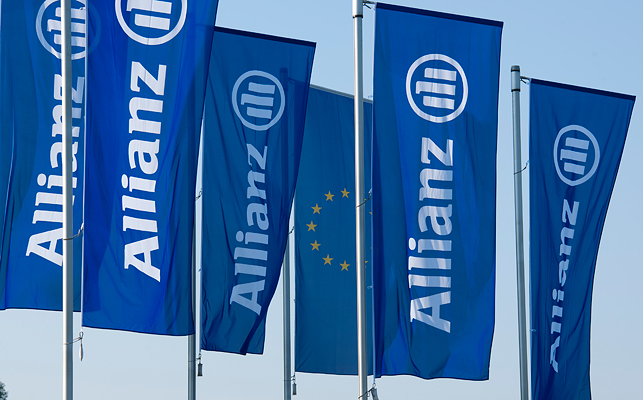“In a changing climate, the role of insurance will have to be much bigger”
We hear a lot about mitigating climate change risk. Climate resilience, though, targets a different aspect of climate change. How would you define it?
Sibylle Steimen: To me it means learning to cope, at least in parts, with the new levels of physical risk due to climate change. Let me give a practical example: while today I might see a certain flood level every 20 years, in future I might have to deal with the same high water level every 10 years. If I do not want to face the same type of damage every decade, I will have to implement some countermeasures to keep the water from flooding my property.
Nicola Ranger: I would say, at its core, climate resilience is reducing the impacts of climate-related events, be it short-term events like floods, droughts and wild fires, but also the long-term trends, for example, changes in patterns of food production around the world that we expect to see with climate change. Climate resilience is basically about trying to reduce those impacts on society, on people, on economies.


Which role can the (re)insurance industry play in supporting climate resilience?
Nicola Ranger: Data is key in building a climate resilient future, and (re)insurers can offer so much with their deep knowledge of risk, also in regard to climate risk. The insurance industry has already done a lot, but I think it can do significantly more. I lead an initiative called the Global Resilience Index Initiative which basically takes insurance knowledge and provides open climate risk data. It is a great initiative, but it needs to be much bigger. That is a key area where more can be done.
Insurers can also do a lot to promote adaptation to climate change in their underwriting. You can do more than ensuring risk-adequate pricing; for example, by creating more incentives for your customers to adapt, such as with build back better initiatives.
Finally, as large asset owners, insurers have huge leverage on the investment side. The insurance industry can accelerate investments in resilient infrastructure by adjusting their own investment portfolios.
Sibylle Steimen: I agree with Nicola: we as insurers need to do much more to help our customers to understand the changes in risk on the one hand and on the other hand also consult them how to best protect their property and themselves.
In which area do you see potential for the biggest impact for more climate resilience?
Nicola Ranger: One would be around risk data. If we could easily overcome the issues around sharing data that would be transformative. There’s so much great information that is held behind walls at the moment and just isn’t accessible to people who need it. So that would be one thing: finding ways to make that data more available so everyone can benefit from it and level the playing field in understanding of risk.
The next thing on my wish list is to see adaptation and resilience much higher on the public agenda. The main focus is currently on the urgent need to reduce emissions to get to net zero by 2050. This might have been the right approach two decades ago, but we are now living in a world where we are already seeing significant impacts of climate change. Adaptation needs to be on a par with mitigation. I think one of the reasons adaptation and resilience are not talked about as much is because many people think that adaptation is long-term, very complicated and expensive, and that we need to overcome the upfront cost. I find that very frustrating, because actually it is not that expensive at all and the risks are already here.
Sibylle Steimen: In my opinion there is also a psychological reason why the focus of the public discourse is more on reducing emissions and less on financing and enabling adaptation measures. My impression is that many people believe that achieving net zero will somehow magically turn back time and we can stop the physical effects of climate change from happening altogether. If you focus on adaptation, however, you are already accepting the fact that the world has changed because of our warmer climate, and people have a hard time letting their minds go there.
The issue is, though, that even if we were on track to fulfill the goals of the Paris climate agreement, that is to reduce emissions so that we can contain global warming to 1.5 to 2 degrees, we still will need adaptation to deal with changes coming from a warmer world. The stress which give us a glimpse on what is to come in the next couple of decades show: We cannot do without.
Nicola Ranger: I completely agree. At the moment we are at 1.1 degrees warming and we are already seeing more impacts than we had predicted in the past. For Europe, we didn’t foresee that the drying up of the Rhine, the drought, wildfires would come this quickly. And the impacts in the developing world are a lot more significant, for example the 2022 floods in Pakistan.
How can the insurance industry amplify the dialogue around adaptation?
Nicola Ranger: Actually, 20 years ago at the early UN Climate Conferences, the insurance industry was the only financial industry present. And already then insurers were saying that climate change is a big risk and proposing solutions. In some ways I think that the insurers have been drowned out a bit in the discussion now. The talks now at COP are inevitably very focused on the net zero transition and the voice of insurers has been drowned out somewhat by all these big alliances of banks and asset owners. But insurers are major asset owners and insurance is an important part of the solution to climate change. I think the insurance industry needs to come back and push the focus on risk and adaptation as well. In addition, insurers need to be much louder in those discussions at the international scale, the national scale as well, and even at client level. So it’s really about getting the voice of the insurance industry out there and shouting: these are huge risks, action needs to be taken. Which I think you are already doing, but it needs to be done much, much louder.
Sibylle Steimen: I fully agree that we should become much more vocal. But when you talk about adaptation, people tend to say, well, there’s no payback for that. I think what we have to do is partner up with our clients. It must become clear that adapting to climate change is a joint endeavor. For example, we could think about an insurance cover not from zero, but from a little higher up, thus helping to keep premiums for the customer more stable. In addition, we can consult customers on how to protect their property from very high-frequent losses, the ones they would have to retain without counter measures. That’s currently not the thinking that most retail clients will have at the top of their list – but facing the challenge of climate change together will become a necessity to keep the insurance system healthy for all involved parties. Most commercial clients are used to mitigating risks to their business and thus have a different level of risk awareness, so adaptation measures are already high on their list. In order to create true climate resilience for everyone, though, we need to have an open dialogue with all our customers, and we need to pick up the pace.


